Homeowner Resources
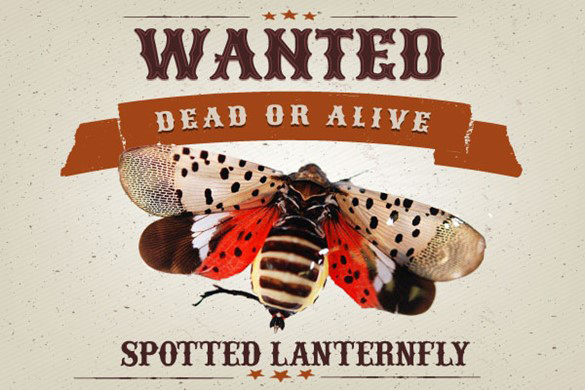 Wanted: Dead or Alive
Wanted: Dead or Alive
What can you do to help? “Join the Battle, Beat the Bug”
This insect is an excellent hitchhiker and is easily moved if no one is looking. If you are in the quarantine area, please “Look Before You Leave.”
Inspecting your vehicles, trailers, or any outdoor items before you move around or out of a quarantine zone is important. If possible, don’t park under tree lines and keep windows rolled up when parking your vehicle. Familiarize yourself with the life stages of the insect and when in the season to look for them.
Survey your own property and community for possible SLF life stages. Any efforts you make in destroying the Spotted Lanternfly or its egg masses will help you and community reduce populations.
Please do not panic, Spotted Lanternfly will NOT sting or bite humans or animals.
If you see a Spotted Lanternfly, help us Stomp it Out!
Quarantine Zones
Know Your Zones: The spotted lanternfly is quarantined in several Eastern states, so drivers who travel through these areas need to be extra careful that they aren't moving this pest. Check with your state agricultural department for quarantine information.
If your employment or business operates in or near an infested area, or if you receive shipments from an infested area:
- Check Your Vehicle: Before leaving a parking lot or work site, inspect vehicles for spotted lanternfly egg or insects. Check doors, sides, bumpers, wheel wells, grills, and roofs. If found, destroy any eggs or insects you find.
- Inspect Items Being Moved: Check shipping containers, propane tanks, pallets and other items being stored outdoors before they are moved off-site. Inspect incoming goods for egg masses and insects.
- Park with Windows Closed: The spotted lanternfly and its nymphs can enter vehicles unsuspectedly. When parked, make sure to keep windows closed. If possible, try to park 15 feet away from trees.
- Remove and Destroy Pests: Crush nymphs and adult insects. Scrape egg masses into a plastic bag and place in trash.
- Remove Host Trees: Spotted lanternflies prefer the ailanthus tree, also known as “Tree of Heaven.” Try to remove trees from the business property to avoid attracting spotted lanternfly.
- Comply with Permitting: Businesses must have permits to move equipment and goods. Visit https://extension.psu.edu/slf-permit-training-nj for more information about permits.
Do You Live in a Quarantine County?
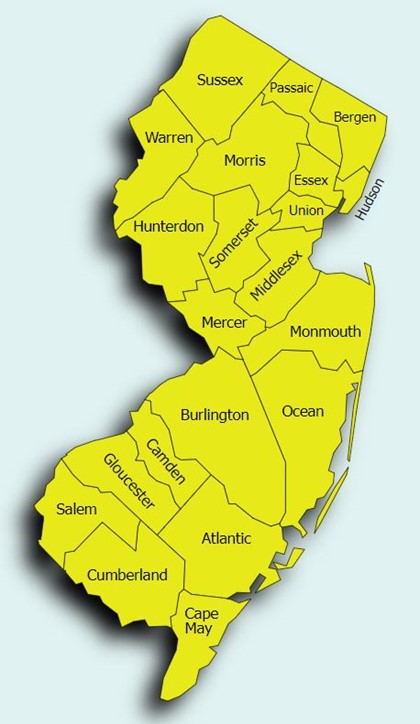 Map of NJ with counties that are quarantines highlightes. Refernce list in this section.
Map of NJ with counties that are quarantines highlightes. Refernce list in this section.
All New Jersey counties are now quarantined
Regulated Articles
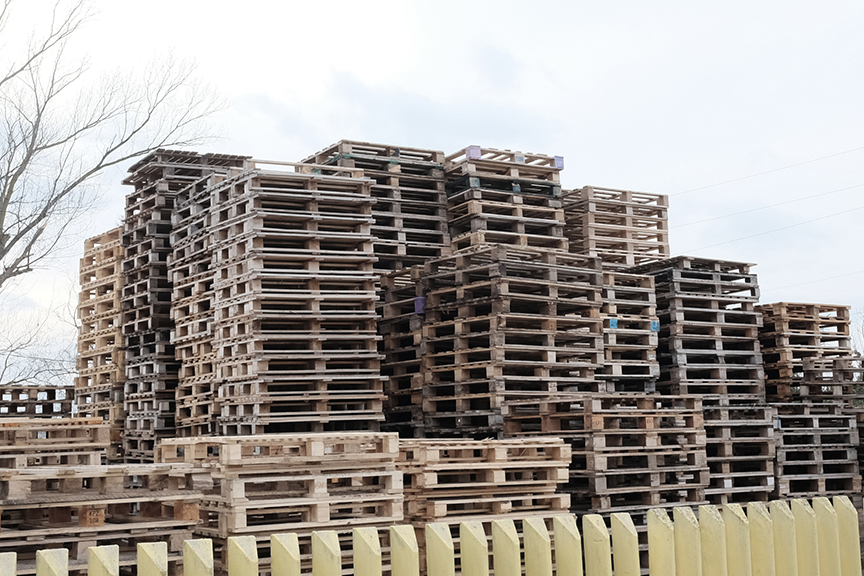 Photo of wooden pallets - a regulated article
Photo of wooden pallets - a regulated article
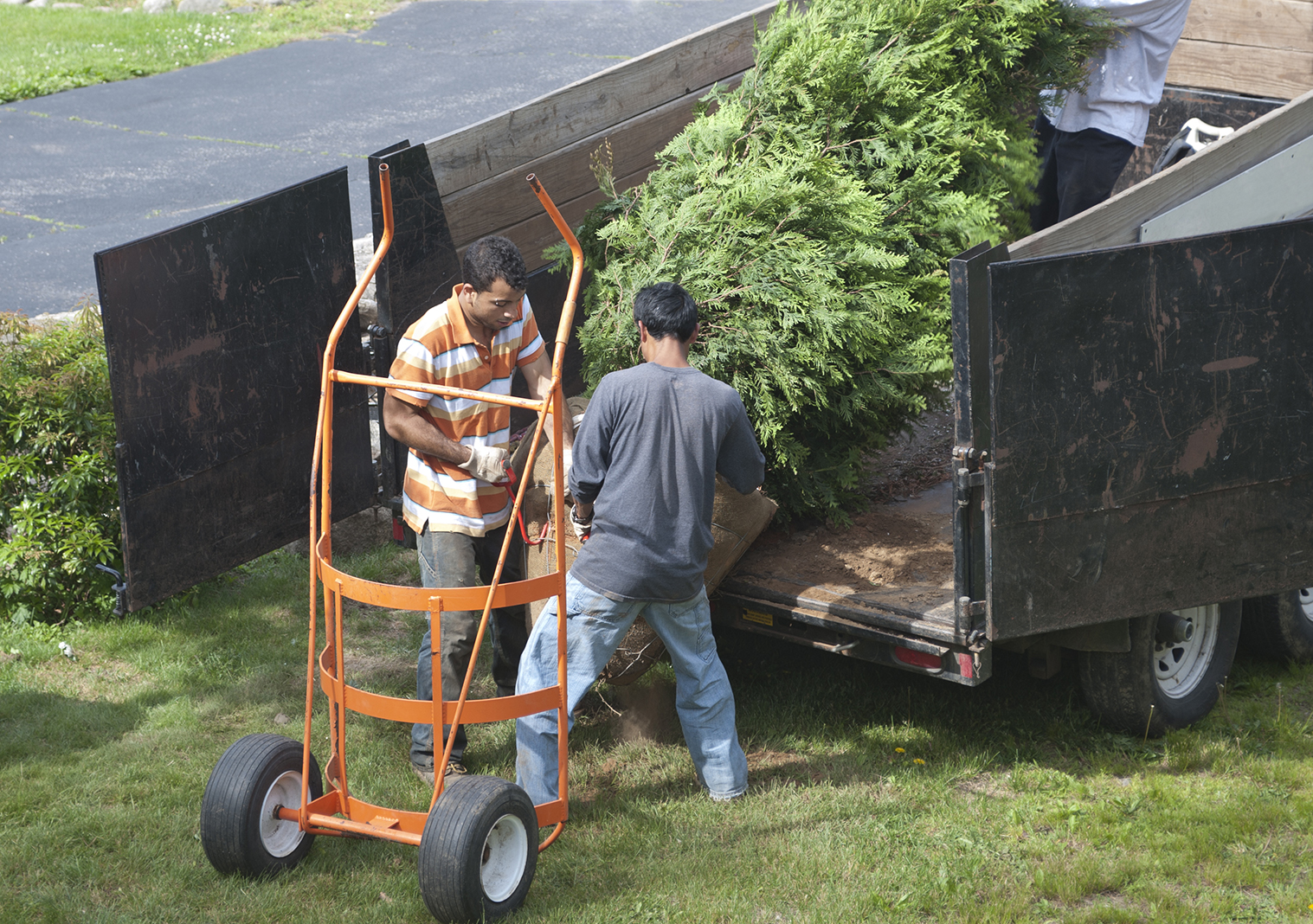 Photo of vehicle pulled trailer- a regulated article
Photo of vehicle pulled trailer- a regulated article
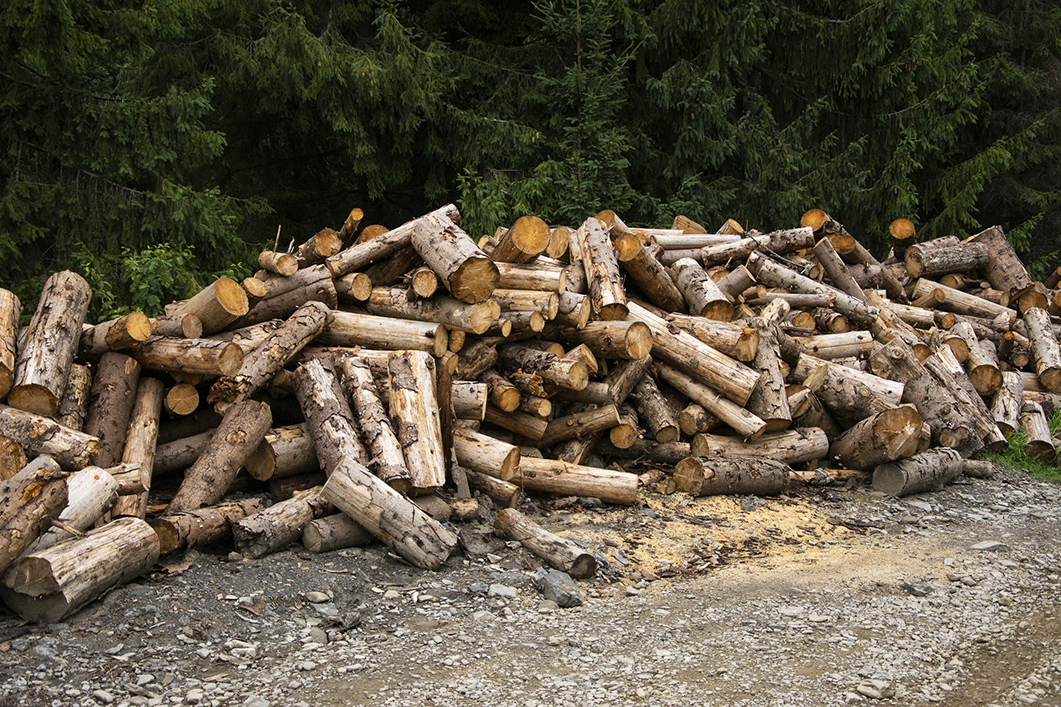 Photo of logs - a regulated article
Photo of logs - a regulated article
To stop the spread of spotted lanternfly (SLF), the New Jersey Department of Agriculture (NJDA) has issued a quarantine for all of New Jersey. This quarantine requires all businesses and organizations moving within or from the quarantine zone in the course of their work to obtain permits issued by NJDA.
Regulated articles include but not limited to:
- Any living life stage of SLF.
- Landscaping, remodeling and construction waste.
- Firewood of any species.
- Packing materials (e.g., wood pallets, crates, boxes)
- All plants and plant parts including logs, stumps and any tree parts.
- Outdoor and household articles like RVs, boats, lawn mowers, chairs, grills, tarps, tile, stone, deck boards, and trucks or other vehicles not stored indoors.
- Anything!
New Jersey Spotted Lanternfly Quarantine For General Audience
NJ Spotted Lanternfly Quarantine Rules – see Subchapter 10 to Quarantines regulations
Management & Control Options

Monitoring
As mentioned above, SLF utilizes a large range of plant hosts. Home gardeners have reported SLF feeding on their backyard plants, including cucumbers, basil, rose, peony, Russian sage, and more. In most cases, SLF will only feed on these herbaceous plants for a short period of time (less than one week). In some cases, damage on these plants has also been reported. Whether or not damage occurs appears to be largely dependent on the density of the population and other plants in proximity. We highly recommend that you monitor for SLF on a regular basis to try to predict where SLF is likely to feed and move in a given area. If there are other highly desirable hosts nearby, we recommend you focus monitoring and potential treatment on those plants. Monitoring can be done through visual inspection.
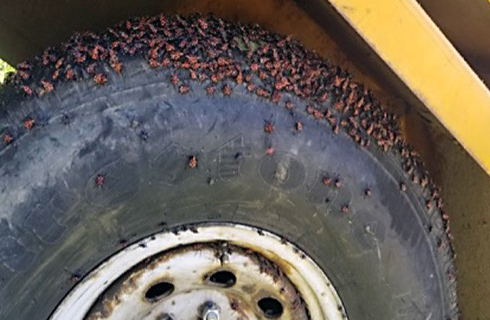
Monitoring for nymphs, egg masses, and adults: Numerous spotted lanternfly nymphs congregating on top of tire inside wheel well of truck. Photo: PA Department of Agriculture.
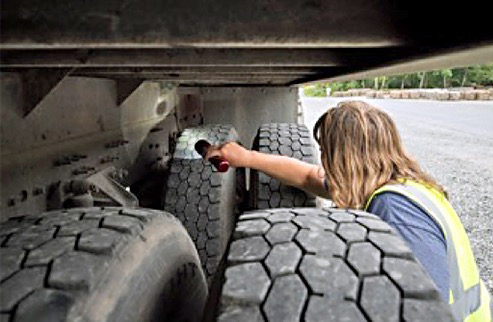
Monitoring for nymphs, egg masses, and adults: Inspecting undercarriage of truck with flashlight. Photo: USDA Flickr.
Management
It is important to understand that SLF cannot be prevented from coming onto any one property. SLF adults tend to fly to new trees to feed in the late summer. Properties adjacent to land with high populations of SLF will likely experience higher populations of SLF when the adults begin to move around. While we are currently working on developing alternative management practices for SLF, our most effective control measure to date is the use of insecticides.
Biological Control
Predacious insects and spiders, parasitoids, and fungi have all been found attacking SLF in the United States. These are generalist natural enemies and they are unlikely to greatly reduce the population levels of SLF. More research is being done to understand if we can better utilize these already existing natural enemies for SLF management. Currently, there is no commercially available biological control option available for SLF. Research is ongoing to find potential parasitoids or pathogens that can be released into the United States as a long-term control solution.
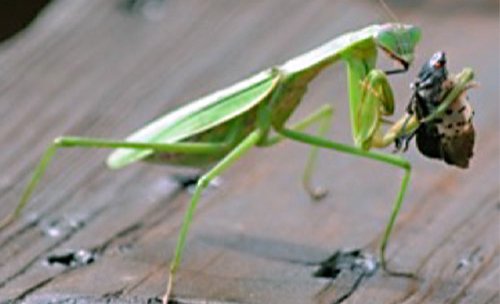
Spotted lanternfly adult being eaten by a praying mantis. Photo: PennState Extension.
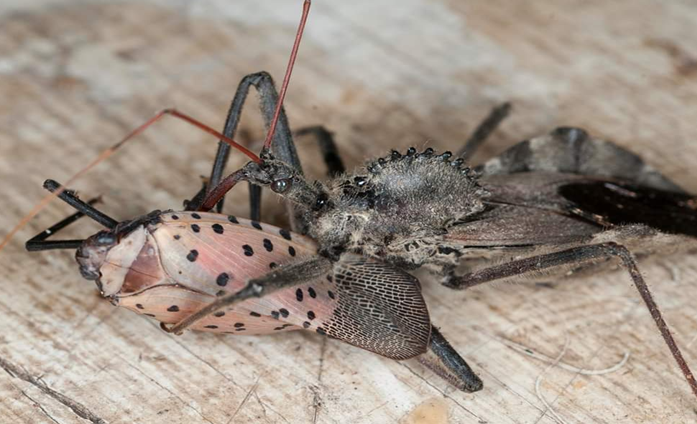
Spotted lanternfly being consumed by a wheelbug.
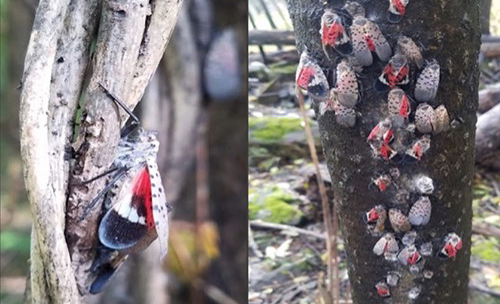
Spotted lanternfly adults in Pennsylvania, infected by fungi closely related to Entomophaga sp. Photo: PennState Extension.
Cultural Control
Removing Preferred Host Plants
If Tree of Heaven is found on the property, we recommend its removal, if possible and practical. When removing tree-of-heaven, you should use an herbicide (see Tree-of-Heaven for more information). If there are other tree species on the property that are not highly valued by the homeowner and have high populations of SLF, they could also be removed. Removal of preferred hosts, including wild grape and oriental bittersweet, might help reduce populations of SLF. Trees that overhang outdoor living spaces such as patios or pools can be pruned to reduce dropdown of SLF and honeydew/sooty mold accumulation. Otherwise, consider treating these trees with an insecticide to reduce the nuisance in these areas.
Scraping Egg Masses
Scraping SLF egg masses and placing them permanently in an alcohol solution (e.g., rubbing alcohol, hand sanitizer) is another approach to reduce SLF damage. It is important to consider that SLF egg masses are laid on many surfaces, including rocks, trees, fence posts, and outdoor furniture. Additionally, because egg masses can be found at all heights on a tree, safely reaching all of them is not practical.
Destroying Spotted Lanternfly Egg Masses
Scraping Egg Masses
Chemical Control
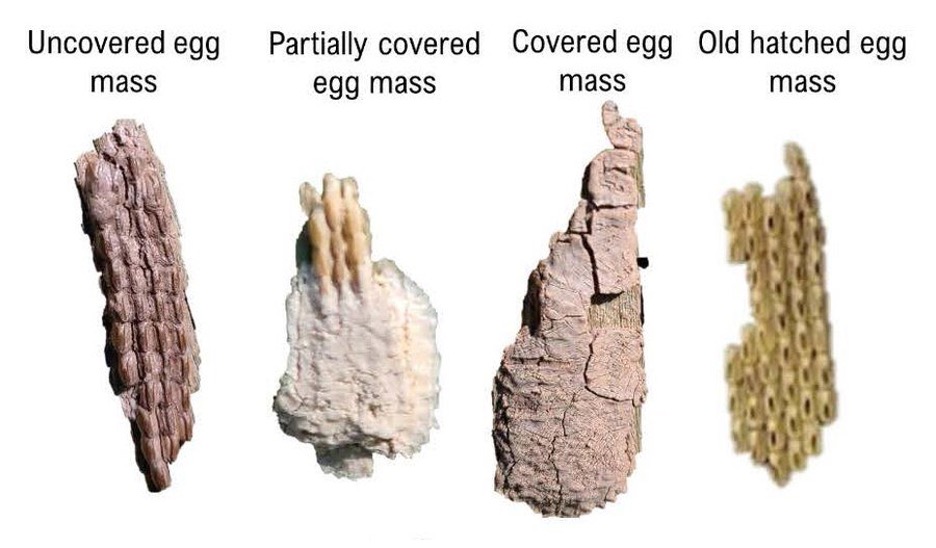 Variations in spotted lanternfly egg masses including color (yellow, gray, brown) and covering. Photo Heather Leach.
Variations in spotted lanternfly egg masses including color (yellow, gray, brown) and covering. Photo Heather Leach.
Ovicides
Based on studies done in 2018 and 2019, our results suggest some insecticides have ovicidal action against SLF eggs. All studies were done on intact egg masses (with covering) between February and April. Although many synthetic insecticides were tested against SLF eggs, the most effective products tested were paraffinic and/or mineral oils such as JMS Stylet oil, Damoil and Lesco Horticultural oil, commonly used in fruit systems as insecticides to control soft bodied insects. Many of these oils are also available to residents at local garden centers. When oils were applied at a solution of at least 3 percent, they were effective in killing up to 75 percent of treated eggs. One of the most important parts to getting effective control is to make sure you have good coverage and apply the oil solution directly to the egg masses. The only plant-based oil, soybean oil, had similar control of SLF egg masses when applied at a 50% concentration. Oils, when applied at the correct time and with good coverage, can offer some control of egg masses and have very little non-target effects. The use of oils provides not only a safe, environmentally friendly option but also provides control to some egg masses that are not accessible for physical removal or smashing. However, for egg masses that are within a reachable area, smashing or scraping the egg masses will provide greater efficacy than the ovicides currently available.
Contact Insecticides
Many commonly available insecticides that kill insects on contact are effective against SLF. Efficacy, residual activity, and toxicity vary between products. We recommend trying the least toxic options first. Toxicity to mammals can be determined from the LD50 values found on the Safety Data Sheet (SDS) for each product, and toxicity to birds, fish, and bees can be found in the table below. If systemic insecticides are not used, frequent use of contact insecticides may be needed to control SLF for the entire season. Always apply insecticides after bloom is finished to help protect natural enemies and pollinators.
*Some trees are sensitive to horticultural spray oil.
Note: This is a guide for when to use management tactics to manage SLF. Read each label carefully and apply according to the label directions. These are our current best recommendations for management tactic timing, but not all combinations of active ingredient, timing, application methods, and tree species have been tested.
Systemic Insecticides
Although we previously recommended certain systemic incesticides, we no longer recommend them as they are now banned from agricultural uses. If a Spotted Lanternfly systemic insecticide becomes available and is known to be effective, we will post it to our website.
Potential Non-target Effects of Insecticides
Water Contamination
Every precaution should be taken to protect surface water and groundwater from pesticide contamination. Trunk injections pose the smallest risk to contaminating water because the insecticide goes directly into the tree. Soil drench applications should only occur directly adjacent to the trunk of the tree, as directed on the label. Soil drenches should not be applied to sandy soils or where the water table is shallow. Both dinotefuran and imidacloprid can persist in groundwater for extended periods. When exposed to sun, both of these compounds break down readily. To protect surface water, systemic insecticides should not be applied near open water sources (ponds, lakes, streams).
Pollinators & Other Insects
Many of the trees on which SLF have been observed feeding in high densities are also pollinated by bees (e.g., maples and oaks). It is possible that trees treated with systemic insecticides could have insecticide residue in the flowers and nectar the following spring. Neonicotinoid insecticides, in particular, have been associated with bee health decline. Additionally, there are many native insects that utilize these trees at the same time as SLF (e.g., caterpillars, beetles, lady beetles, lace-wings, parasitoid wasps) and could be affected by the treatment. Pyrethroids can also be damaging to natural enemy populations and could cause populations of secondary pests, such as mites and scale, to flare up. Generally, systemic insecticides are considered to have a reduced impact on natural enemies compared to broad-spectrum foliar-applied insecticides. We are currently conducting research to determine the effect of SLF treatments on pollinators and other non-targets.
Tree of Heaven
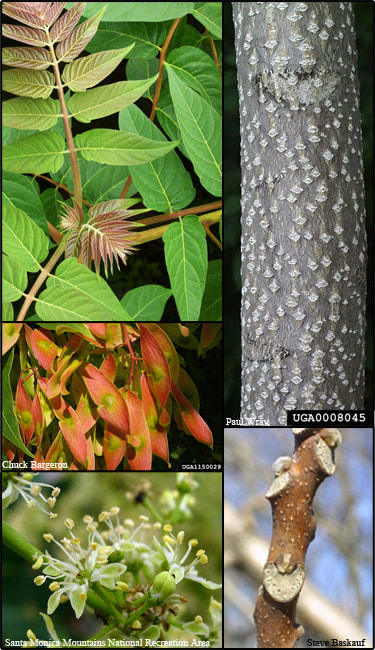 Tree of Heaven (Ailanthus altissima), is an invasive and rapidly growing deciduous tree.
Tree of Heaven (Ailanthus altissima), is an invasive and rapidly growing deciduous tree.
Tree-of-heaven (Ailanthus altissima), is an invasive and rapidly growing deciduous tree, now common to urban, agricultural, and forested areas. Spotted lanternfly is particularly attracted to Tree of Heaven. Learn how to identify and manage the tree and why it's important to the fight against spotted lanternfly.
Traps
DIY Spotted Lanternfly Circle Trap
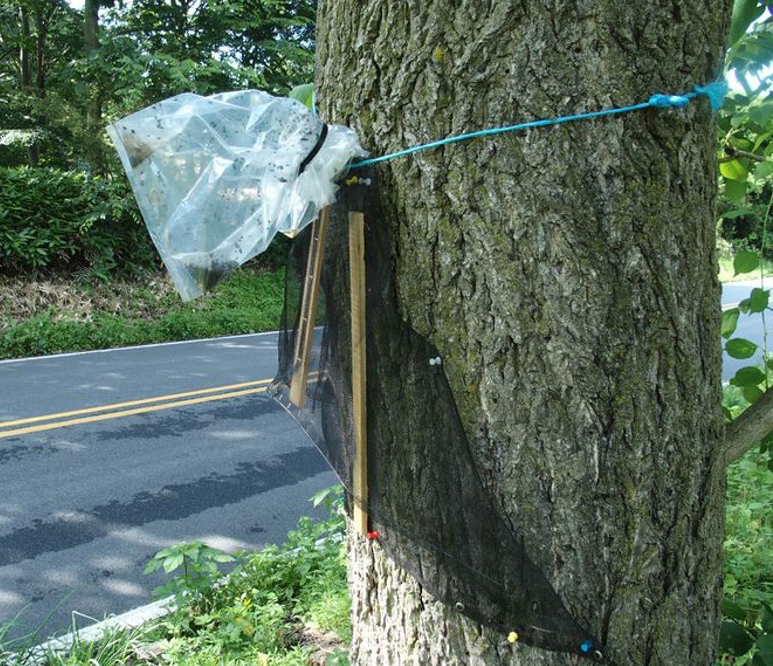
Trap - photo/Emelie Swackhamer
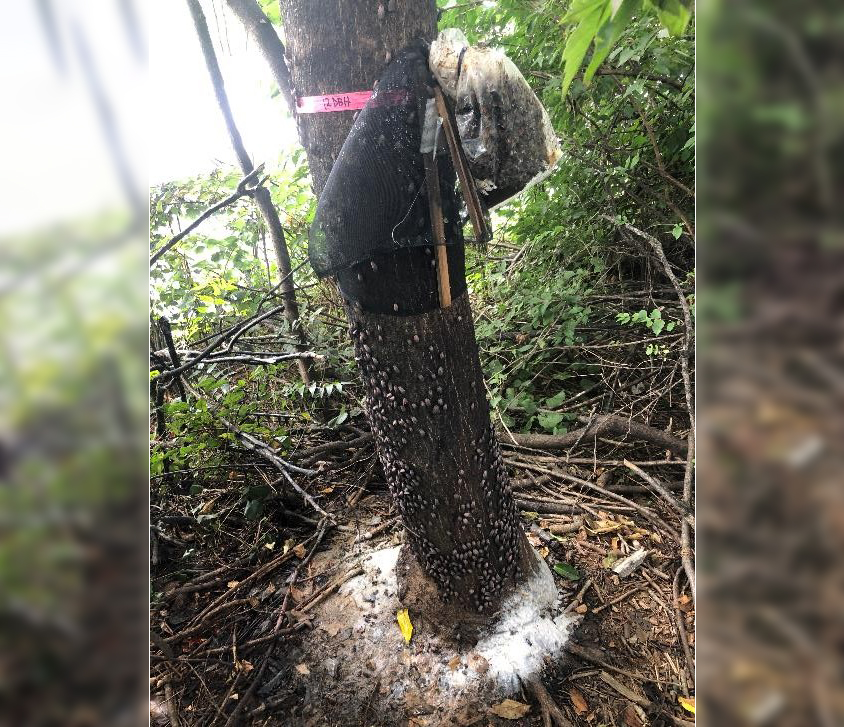
Contact Trap with Gooey stuff - photo credit: , USDA
NJDA Spotted Lanternfly Survey Staff
If a staff member from the NJDA requests to survey an outdoor area, they will be wearing easily identifiable attire as shown below. Staff members will always carry State or Federal identification on them. The survey staff will only request to survey outdoor areas where the Spotted Lanternfly have been reported.
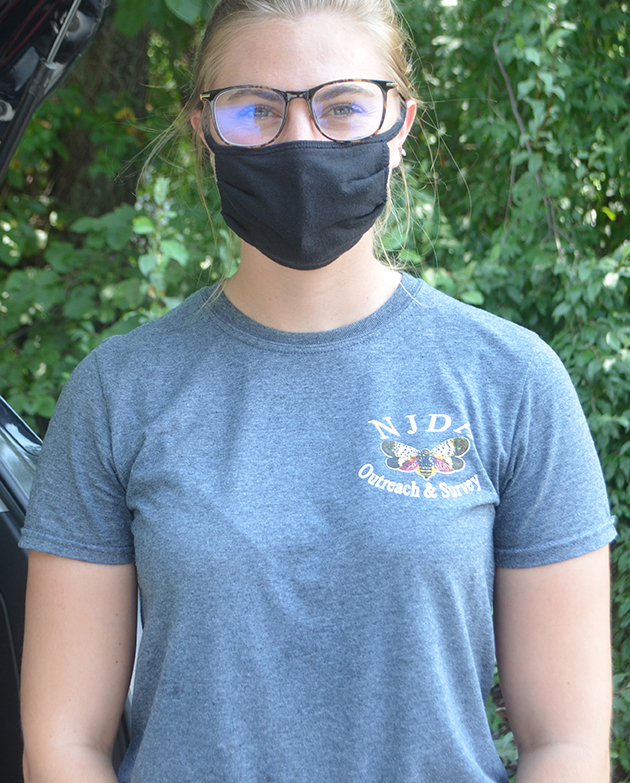
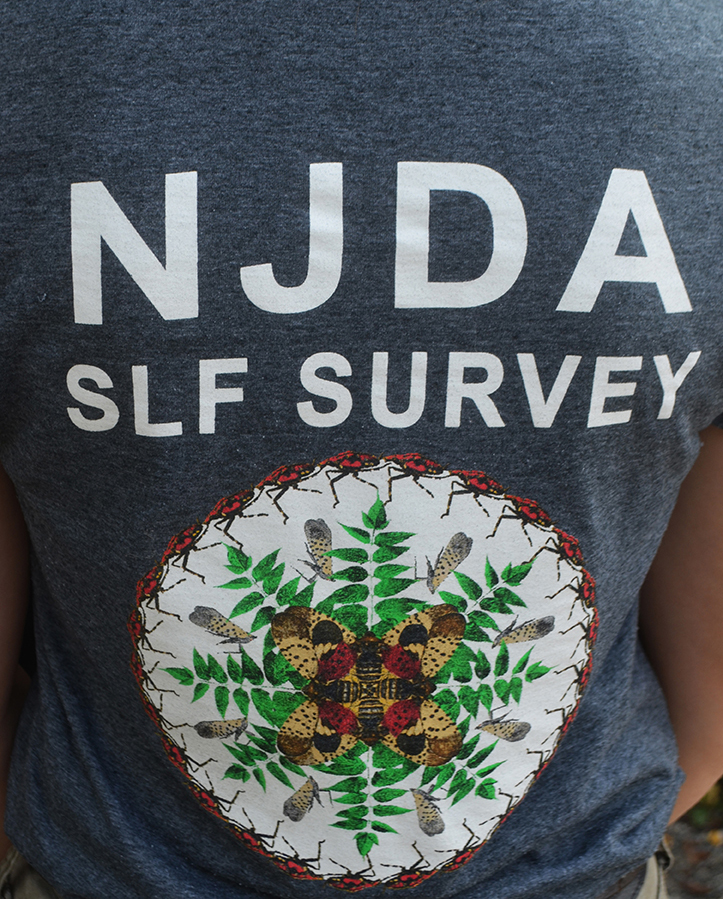
 Official Site of The State of New Jersey
Official Site of The State of New Jersey
